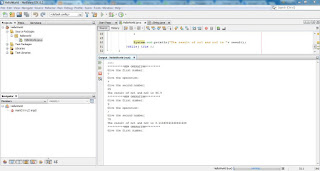SCRUM VS Clasic Project Management
Software development, especially software management are difficult processes, because this processes involve people.
Why are we people such a difficult factor to manage? How does SCRUM helps improve this process?
It is difficult to plan a project properly because of the impediments, which have allays as the root cause, us, the people. If we would be predictable, everything could have been planned in the smallest detail. We create impediments for other teams or even members of the same team and other teams or members of our team create impediments for us.
How can the process be improved here? Can we improve ourself?
Like we program the machines, our parents, our friends, our family, the society programs us. In order to improve ourself without being addicted from commodities of the society, we need to isolate ourself and be focused, but in that case the life would not be fun anymore without interaction. So improving ourself is a difficult process, because we have some patterns programmed in our head and the improvement is affected a lot from outside factors and the input from outside is not always positive.
The answer is the iterative process according to SCRUM. What does this mean and how changes this from the classical project management?
In SCRUM the team has to produce an increment of the product every sprint where in classical project management usually the planning is a long initial process where the project timeline is tried to be as detailed as possible where every possible outcome and deadline is planned in advance. If changes would be presented in the middle of the project, they would have a huge impact on the project and the structures managing and developing the project would not be very open-minded to accept the changes, because they would have unpredicted financial impact and would ruin a long planned timeline.
The iteration process based on SCRUM tries to improve the process by splitting the product in small parts developed every sprint. This avoids the need to have a long and detailed planning at the beginning of the development and makes the process more flexible. The planning in SCRUM which happens every sprint, which lasts between 1 to 4 weeks, is focused only in the development of the next iteration. The backlog of the project may change during the lifecycle of the project, but this changes would not affect a detailed signed plan. In every sprint are developed only the most important features of the product, which are clear and bring an added value to the product. After every iteration, the product can be tested and feedback can be gathered which can improve and clarify the content of the project backlog, so differently form the classical project management where is tried every question to be answered at the beginning of the project, SCRUM process makes it possible to gather information in every sprint for the upcoming steps, so the new information during the project lifecycle is welcomed and would not pose any risk like in the other project management styles.
Regarding the other elements which puts in danger the project goals, us humans, SCRUM has defined processes which make it possible to get input from each other, apply it and check the results and improve in every iteration. This iterative process on us, the core elements of the process makes it possible for us to better know our weakness and strength in order to improve the problematic aspects and emphasise the positive ones.
Why are we people such a difficult factor to manage? How does SCRUM helps improve this process?
It is difficult to plan a project properly because of the impediments, which have allays as the root cause, us, the people. If we would be predictable, everything could have been planned in the smallest detail. We create impediments for other teams or even members of the same team and other teams or members of our team create impediments for us.
How can the process be improved here? Can we improve ourself?
Like we program the machines, our parents, our friends, our family, the society programs us. In order to improve ourself without being addicted from commodities of the society, we need to isolate ourself and be focused, but in that case the life would not be fun anymore without interaction. So improving ourself is a difficult process, because we have some patterns programmed in our head and the improvement is affected a lot from outside factors and the input from outside is not always positive.
The answer is the iterative process according to SCRUM. What does this mean and how changes this from the classical project management?
In SCRUM the team has to produce an increment of the product every sprint where in classical project management usually the planning is a long initial process where the project timeline is tried to be as detailed as possible where every possible outcome and deadline is planned in advance. If changes would be presented in the middle of the project, they would have a huge impact on the project and the structures managing and developing the project would not be very open-minded to accept the changes, because they would have unpredicted financial impact and would ruin a long planned timeline.
The iteration process based on SCRUM tries to improve the process by splitting the product in small parts developed every sprint. This avoids the need to have a long and detailed planning at the beginning of the development and makes the process more flexible. The planning in SCRUM which happens every sprint, which lasts between 1 to 4 weeks, is focused only in the development of the next iteration. The backlog of the project may change during the lifecycle of the project, but this changes would not affect a detailed signed plan. In every sprint are developed only the most important features of the product, which are clear and bring an added value to the product. After every iteration, the product can be tested and feedback can be gathered which can improve and clarify the content of the project backlog, so differently form the classical project management where is tried every question to be answered at the beginning of the project, SCRUM process makes it possible to gather information in every sprint for the upcoming steps, so the new information during the project lifecycle is welcomed and would not pose any risk like in the other project management styles.
Regarding the other elements which puts in danger the project goals, us humans, SCRUM has defined processes which make it possible to get input from each other, apply it and check the results and improve in every iteration. This iterative process on us, the core elements of the process makes it possible for us to better know our weakness and strength in order to improve the problematic aspects and emphasise the positive ones.




Comments
Post a Comment